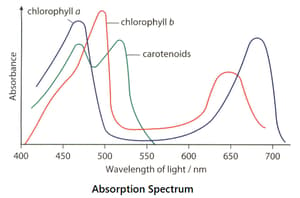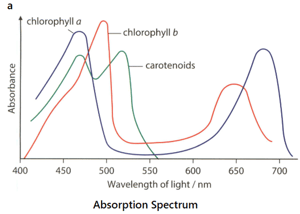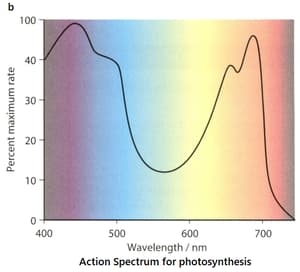MEDIUM
AS and A Level
IMPORTANT
Earn 100
Make a large labelled diagram of the chloroplast and label the diagram.

Important Questions on Photosynthesis
HARD
AS and A Level
IMPORTANT
Compare the structure of a chloroplast and a mitochondrion.
MEDIUM
AS and A Level
IMPORTANT
Based on the given figure, what is the colour of carotenoids? Explain.

MEDIUM
AS and A Level
IMPORTANT
Xanthophyll is yellow. Which wavelengths of light does xanthophyll not absorb?
HARD
AS and A Level
IMPORTANT
Discuss the similarities and differences between the absorption spectra for chloroplast pigments in figure a and the action spectrum for photosynthesis in figure b. If a composite line draws for the absorption spectra, combining all the absorption spectra for the different pigments, how similar would this line be to the action spectrum for photosynthesis? Suggest reasons for any differences.


HARD
AS and A Level
IMPORTANT
In both mitochondria and chloroplasts, an energetic electron passes along a chain of carriers and the energy released is used to synthesise ATP by chemiosmosis. Suggest why the process occurring in mitochondria is known as oxidative phosphorylation, whereas in chloroplast it is photophosphorylation.
MEDIUM
AS and A Level
IMPORTANT
It is often said that photosynthesis converts carbon dioxide to oxygen. Is this correct? Explain.
HARD
AS and A Level
IMPORTANT
In separate experiments, an actively photosynthesising plant was supplied with one of two labelled reactants:
- water containing the 18O isotope of oxygen.
- carbon dioxide containing the 17O isotope of oxygen.
In which products of photosynthesis would these isotopes be found?
MEDIUM
AS and A Level
IMPORTANT
Explain why the Calvin cycle stops running when there is no light and the TP (triose phosphate) is used up.
